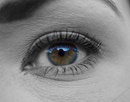Omega-3 Studien: Augen
Omega-3: Fakten - Therapie und Dosierung
Augen: Hoher Fischkonsum (DHA) kann vor altersbedingtem Sehverlust schützen.
In Fachzeitschriften wurden folgende Artikel über Omega-3 publiziert. Die Liste dieser Publikationen wurde im April 2003 kompiliert und erhebt keinen Anspruch auf Vollständigkeit. Quelle: MEDLINE.
Die Daten dienen als Referenz für Ärzte und Therapeuten, damit eine präventive Dosis gegen Sehverlust festgelegt werden kann.
Prospective study of dietary fat and the risk of age-related macular degeneration.
Cho E: Department of Nutrition, Harvard School of Public Health, Boston MA, USA; Hung S, Willett WC, Spiegelman D, Rimm EB, Seddon JM, Colditz GA, Hankinson SE
Am J Clin Nutr 2001 Feb 73:209-18
Abstract
BACKGROUND: The relation between intakes of total fat and specific types of fat and age-related macular degeneration (AMD) remains unclear. OBJECTIVE: Our objective was to examine prospectively the association between fat intake and AMD. DESIGN: We conducted a prospective follow-up study of participants in the Nurses' Health Study and the Health Professionals Follow-up Study. At baseline (1984 for women and 1986 for men), the study included 42743 women and 29746 men aged > or = 50 y with no diagnosis of AMD who were followed until 1996. Fat intake was assessed with a food-frequency questionnaire. RESULTS: We accrued 567 patients with AMD with a visual loss of 20/30 or worse. The pooled multivariate relative risk (RR) for the highest compared with the lowest quintile of total fat intake was 1.54 (95% CI: 1.17, 2.01; P for trend = 0.008). Linolenic acid was positively associated with risk of AMD (top versus bottom quintile of RR: 1.49; 95% CI: 1.15, 1.94; P for trend = 0.0009). Docosahexaenoic acid had a modest inverse relation with AMD (top versus bottom quintile of RR: 0.70; 95% CI: 0.52, 0.93; P for trend = 0.05), and >4 servings of fish/wk was associated with a 35% lower risk of AMD compared with < or = 3 servings/mo (RR: 0.65; 95% CI: 0.46, 0.91; P for trend = 0.009). CONCLUSIONS: Total fat intake was positively associated with risk of AMD, which may have been due to intakes of individual fatty acids, such as linolenic acid, rather than to total fat intakes per se. A high intake of fish may reduce the risk of AMD.
Dietary fat and fish intake and age-related maculopathy.
Smith W: National Centre for Epidemiology and Population Health, Australian National University, Australian Capital Territory; Mitchell P, Leeder SR
Arch Ophthalmol 2000 Mar 118:401-4
Abstract
OBJECTIVE: To assess whether dietary intake of fat or fish is associated with age-related maculopathy (ARM) prevalence. DESIGN: Cross-sectional, urban population-based study. PARTICIPANTS: People (N = 3654) aged 49 years or older. MAIN OUTCOME MEASURES: Subjects with ARM were identified from masked grading of retinal photographs. A 145-itemself-administered, semiquantitative food frequency questionnaire was completed adequately by 88.8% of participants and was used to assess intakes of dietary fat and fish. RESULTS: A higher frequency of fish consumption was associated with decreased odds of late ARM (odds ratio for frequency of consumption more than once per week compared with less than once per month, 0.5). Subjects with higher energy-adjusted intakes of cholesterol were significantly more likely to have late ARM, with an increased risk for late ARM for the highest compared with the lowest quintile of intake (odds ratio, 2.7). CONCLUSION: The amount and type of dietary fat intake may be associated with ARM.
Die Erkenntnisse der Wissenschaft unterliegen stetigem Wandel. Es wurde grösste Sorgfalt in die Verarbeitung dieser Website verwendet, Fehler sind trotzdem möglich. Diese Website ist nicht für Selbst-Diagnose bzw. -Medikation bestimmt. Garantie wird nicht gewährt und jegliche Haftung ausgeschlossen.

